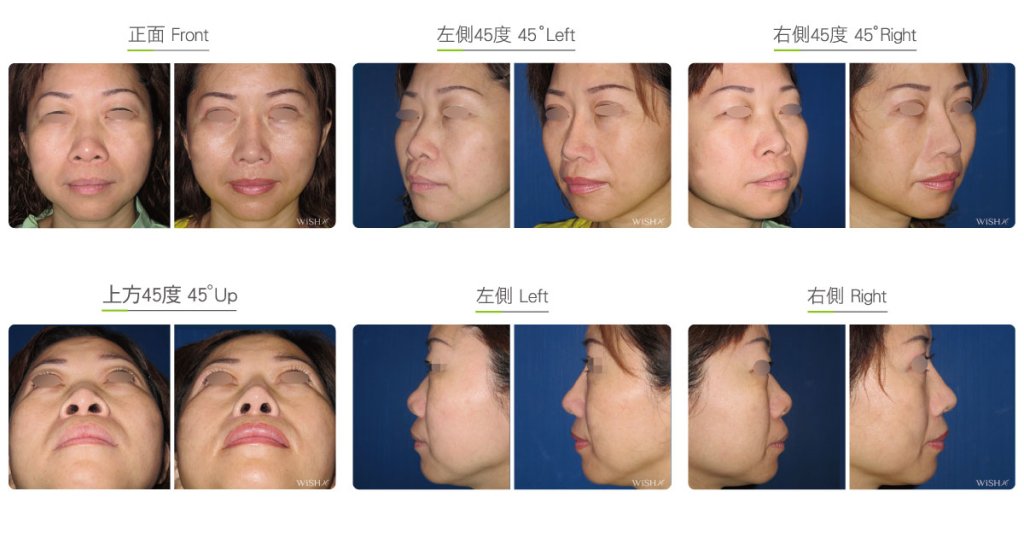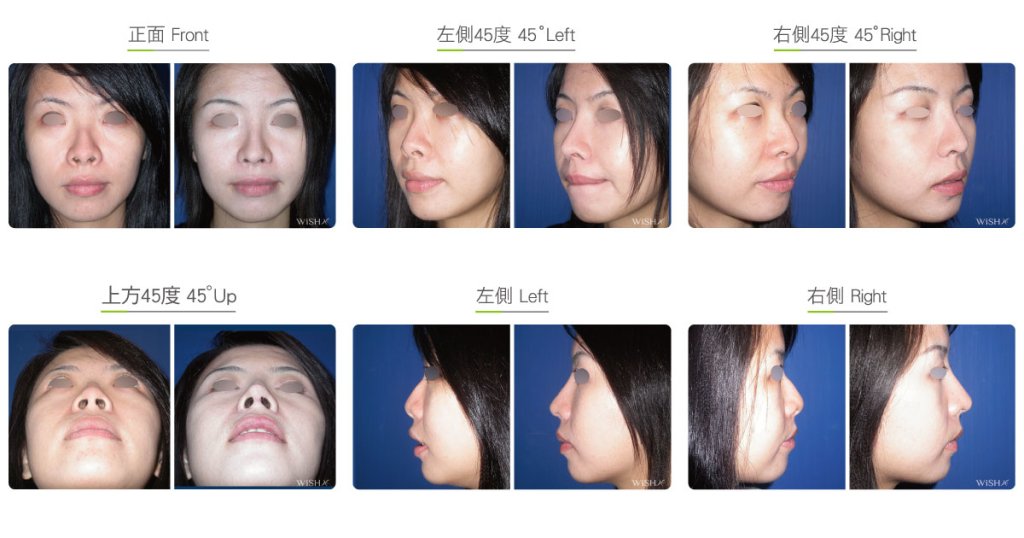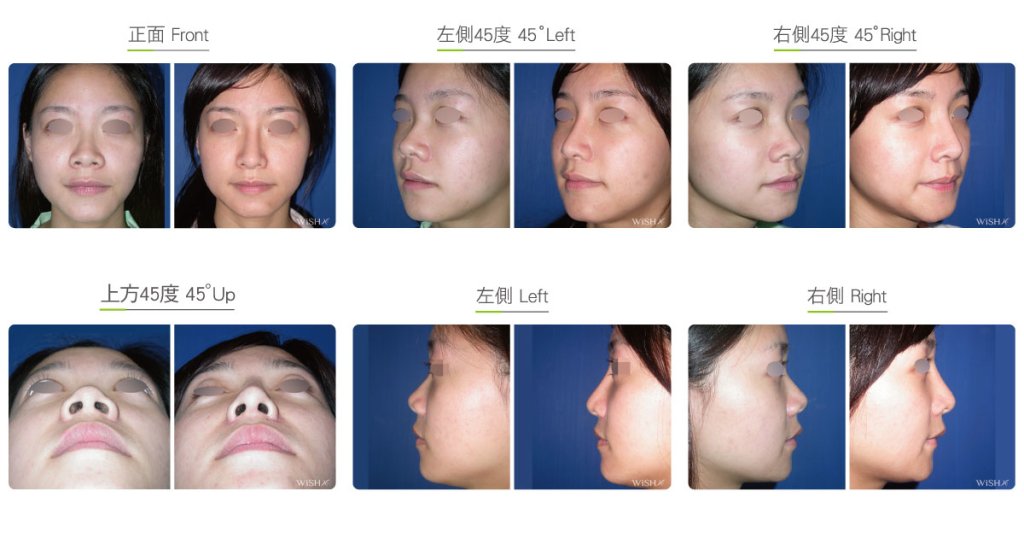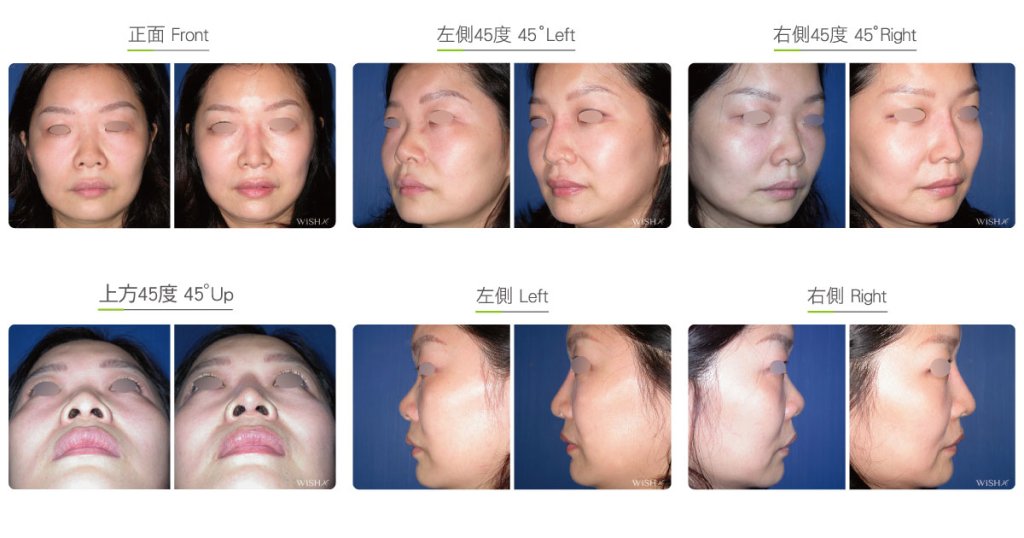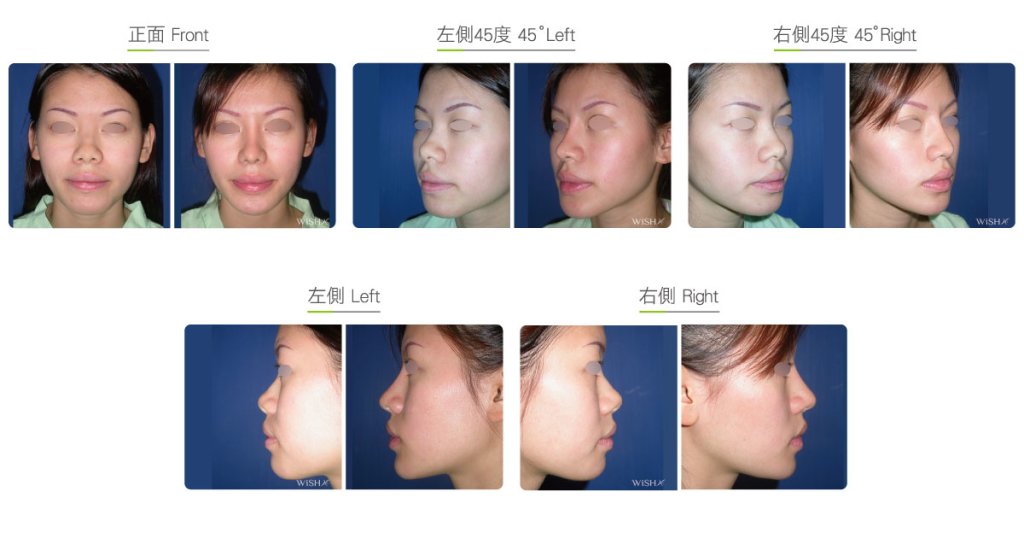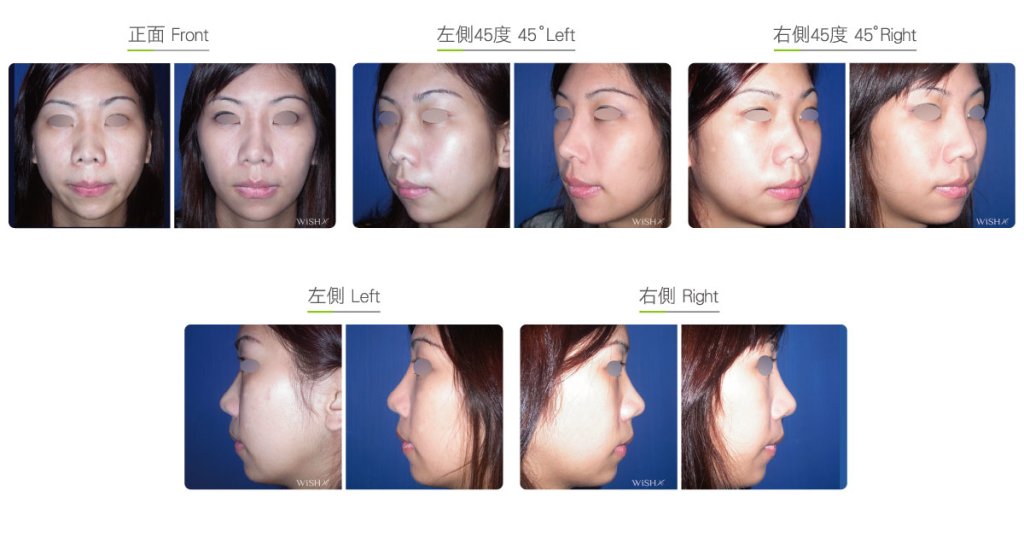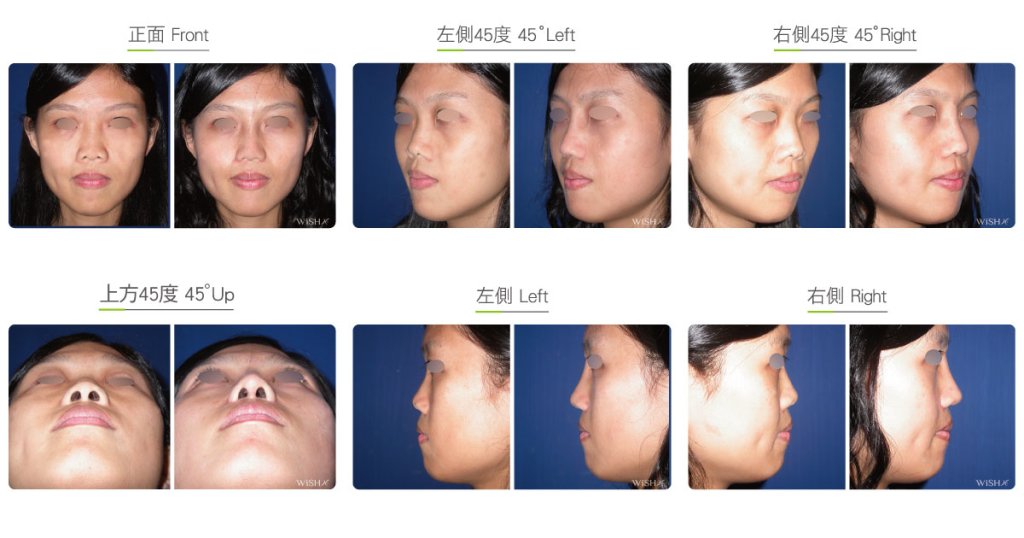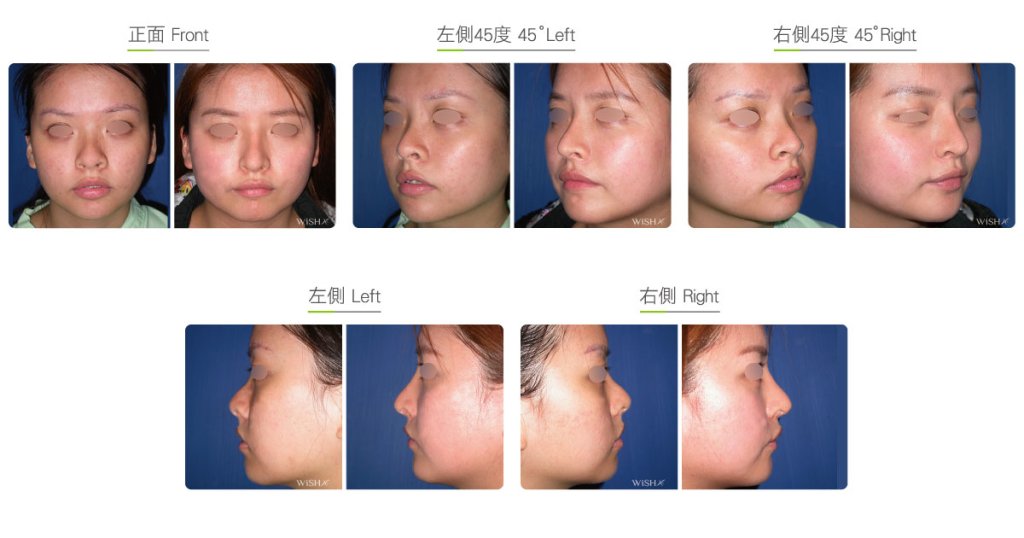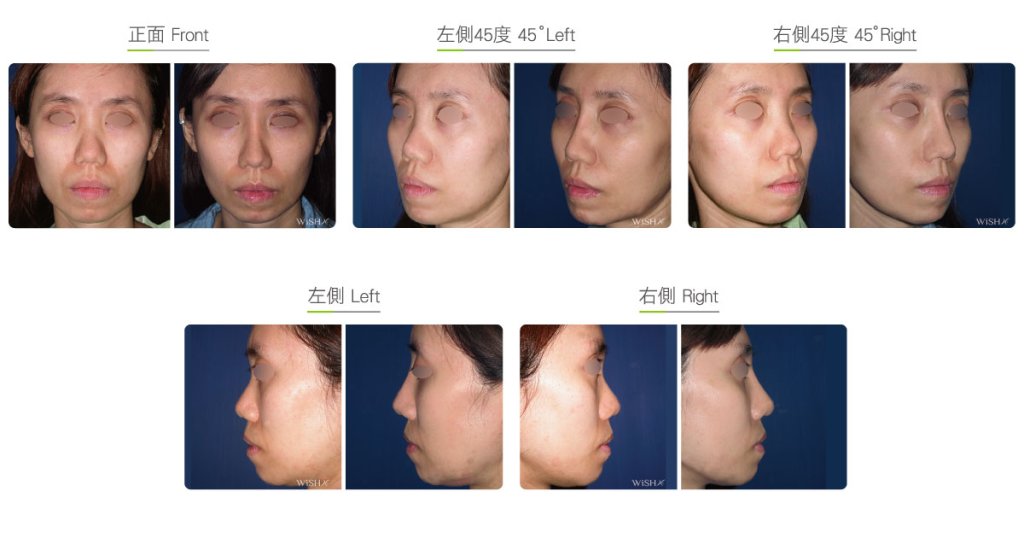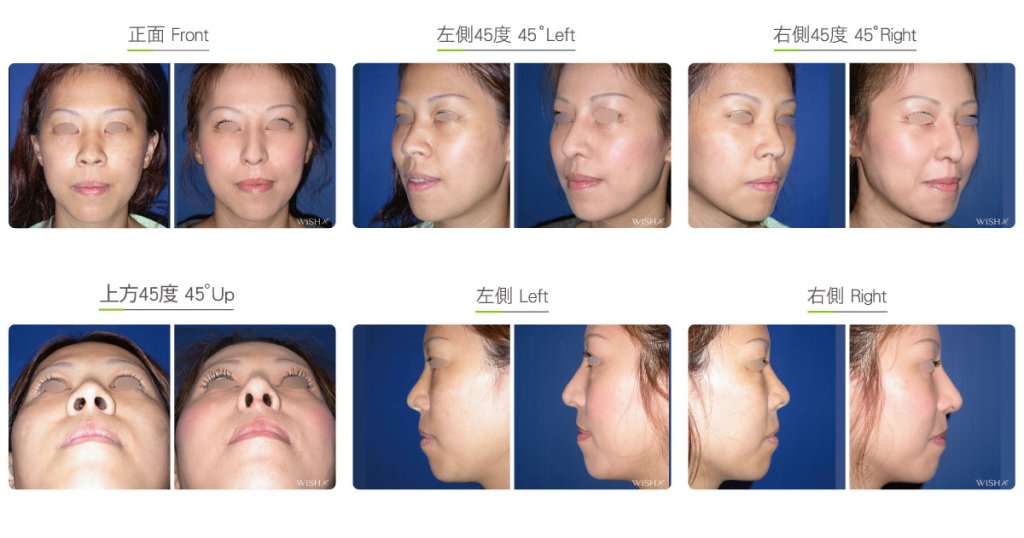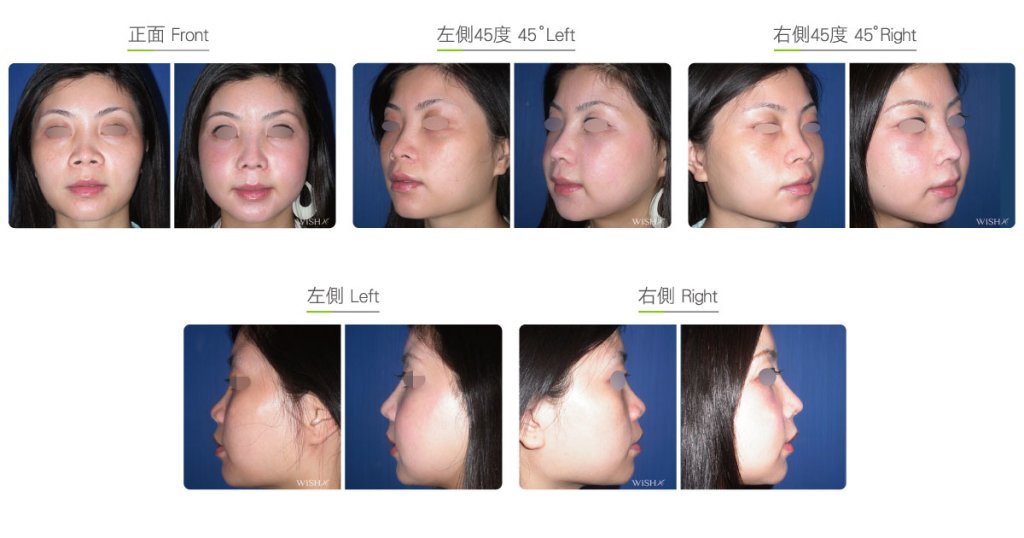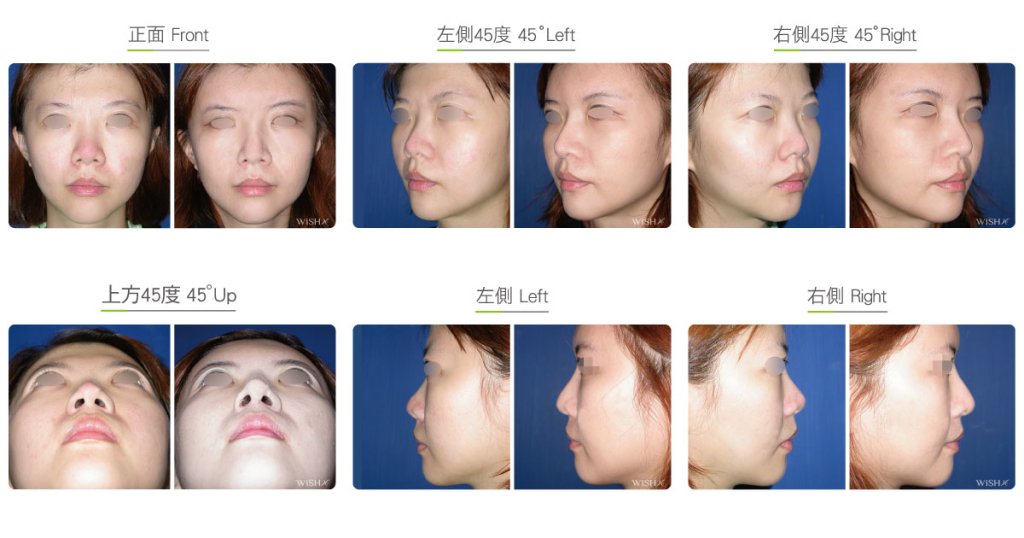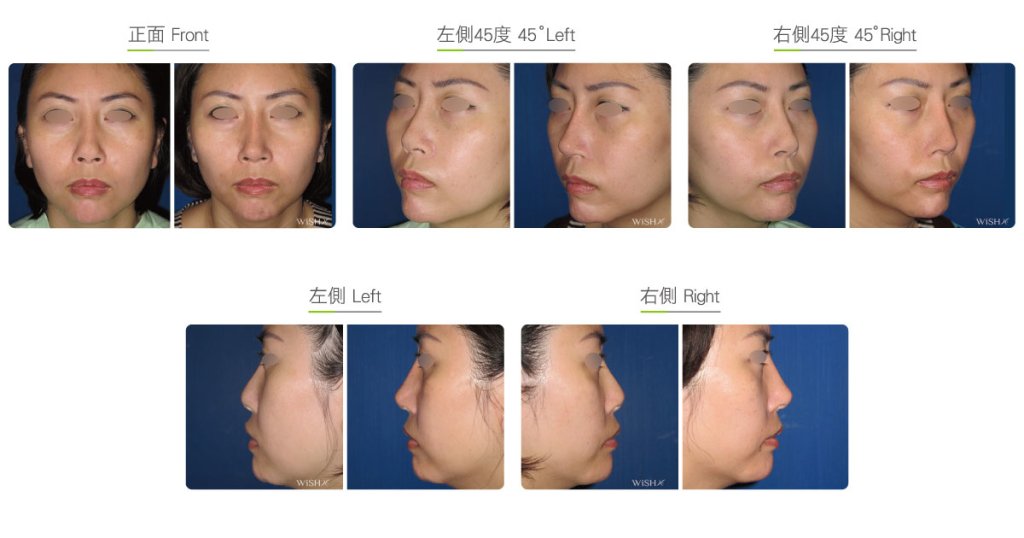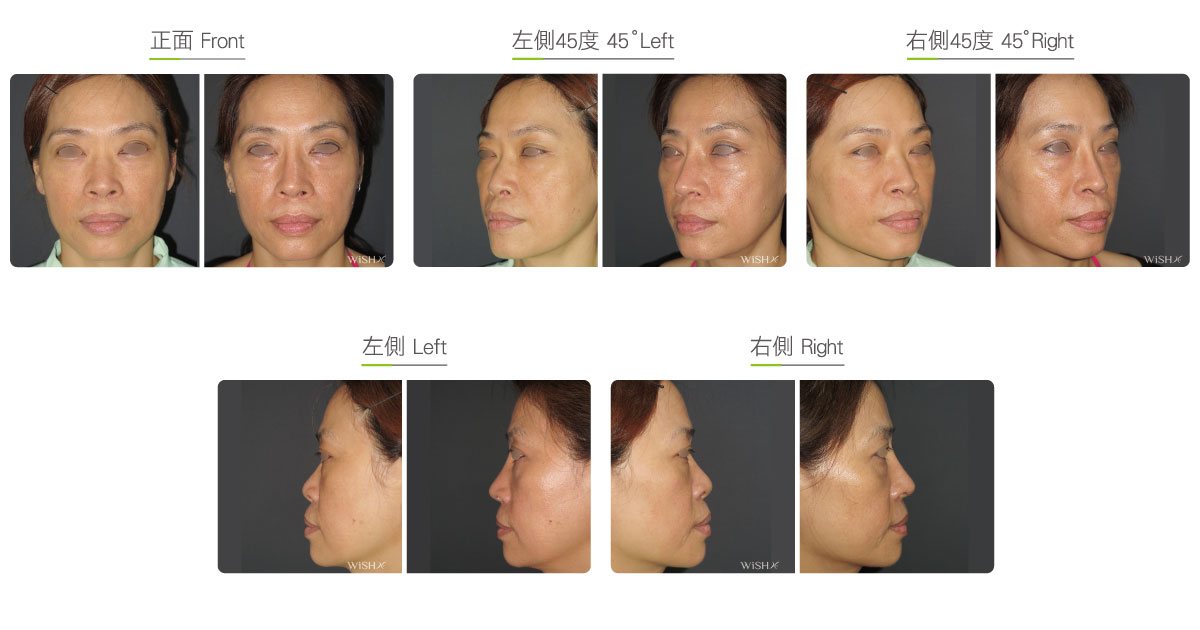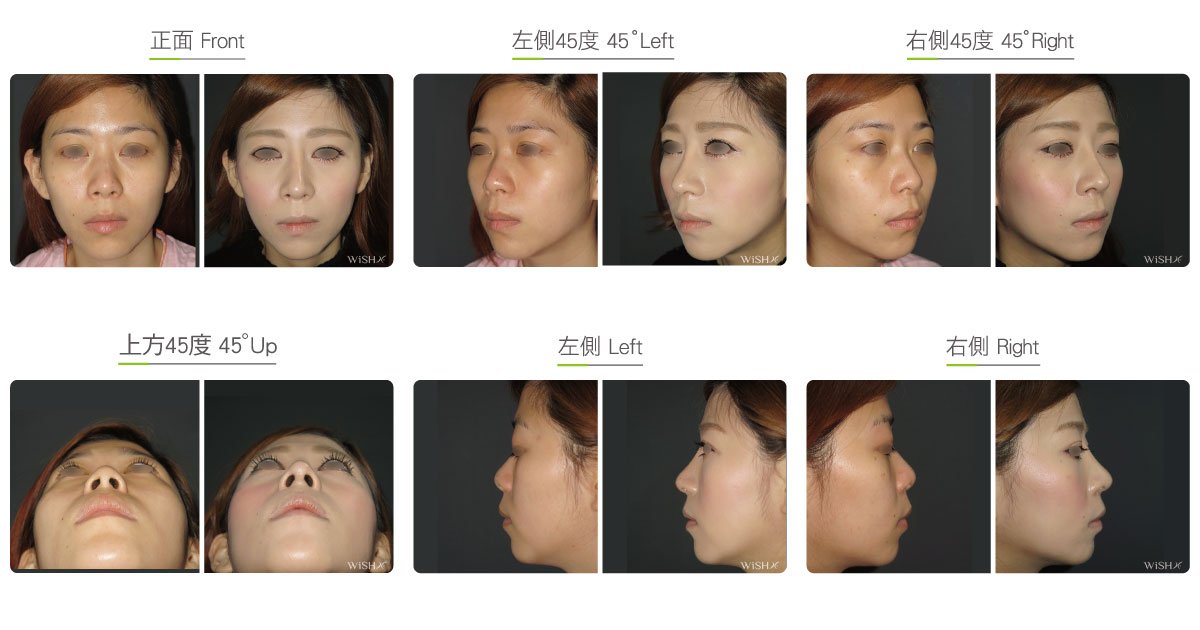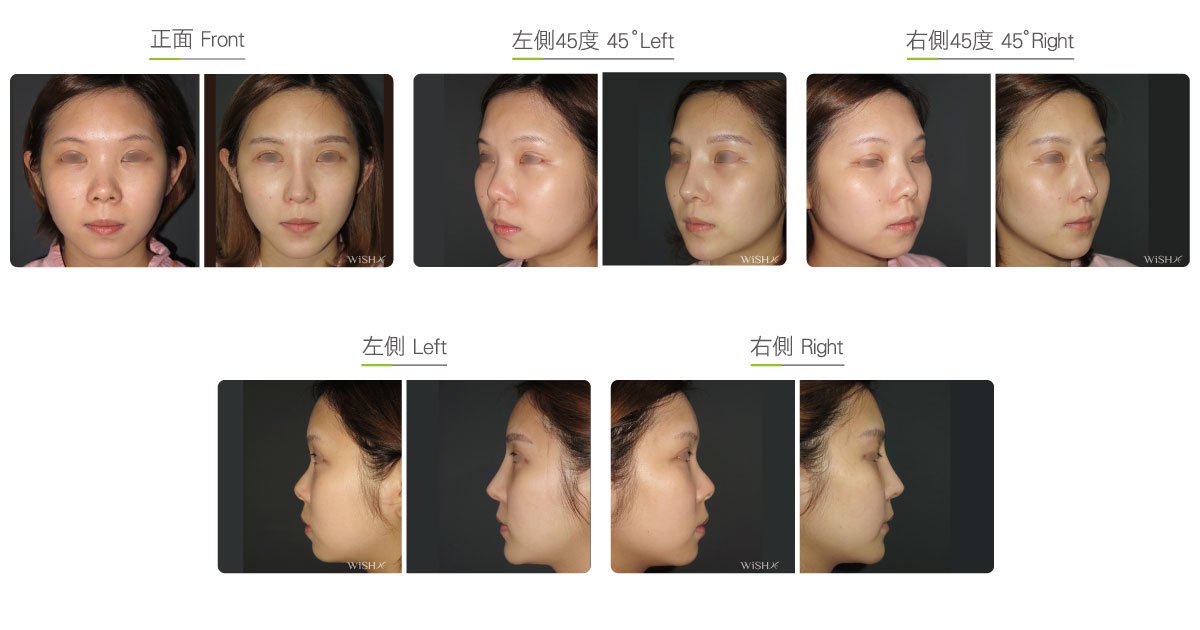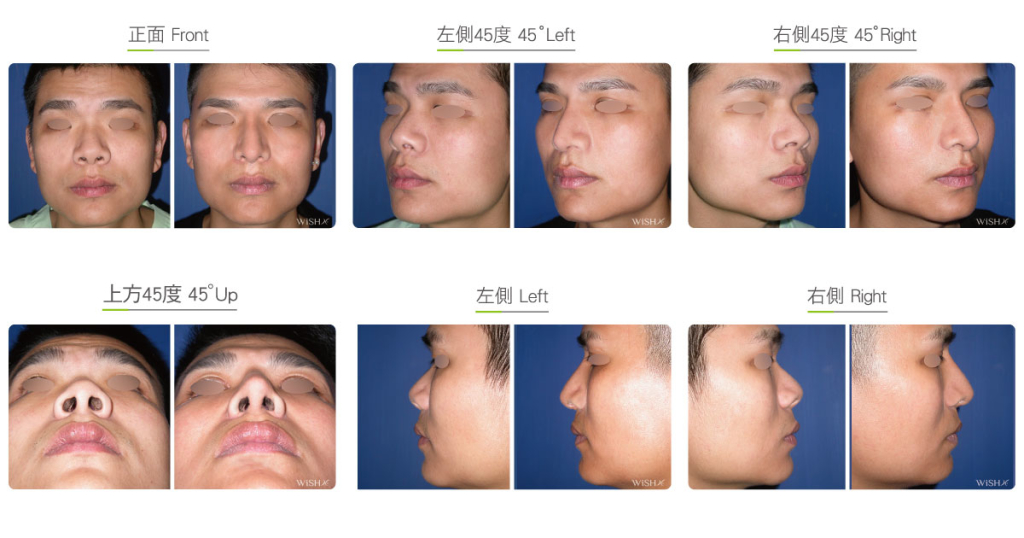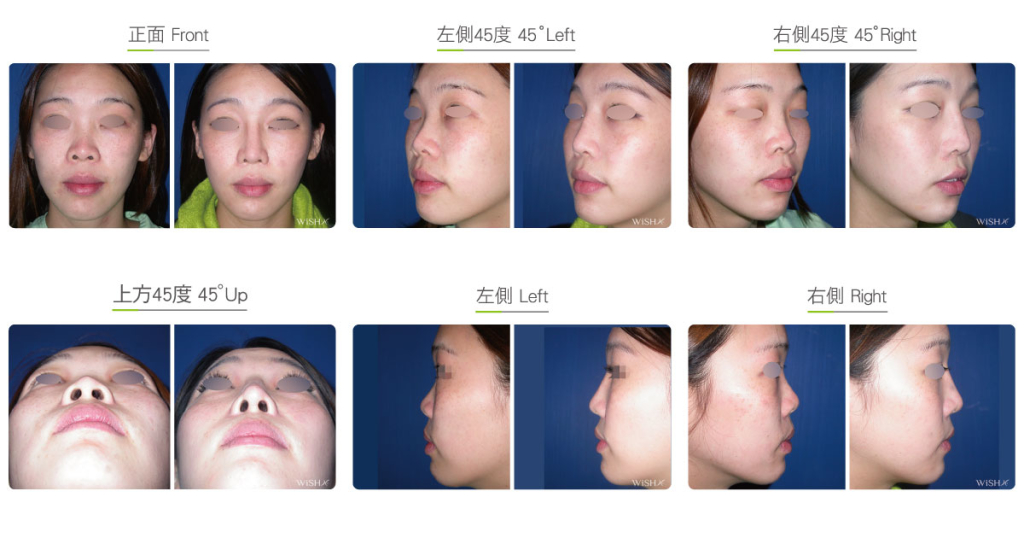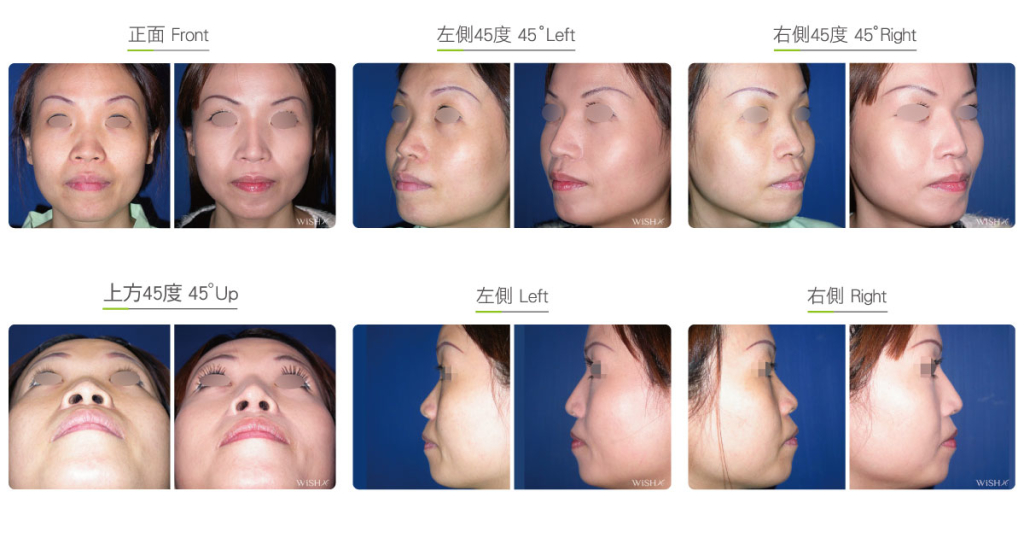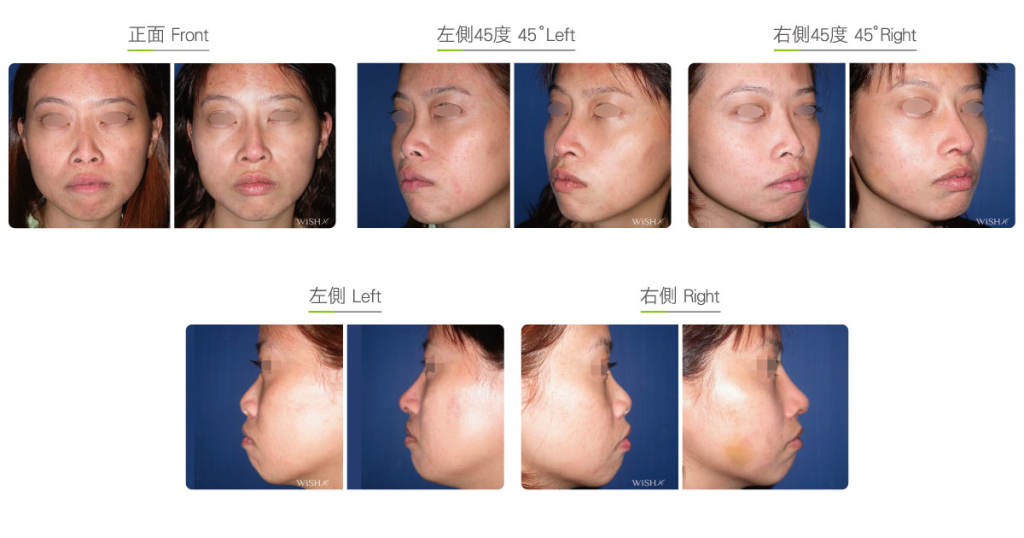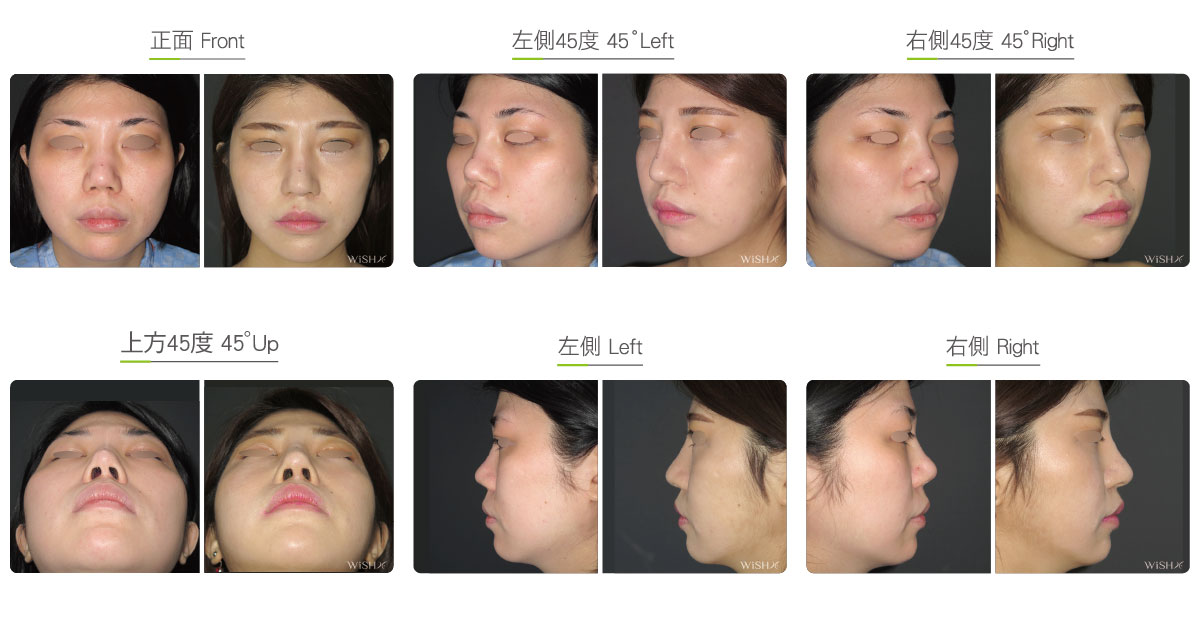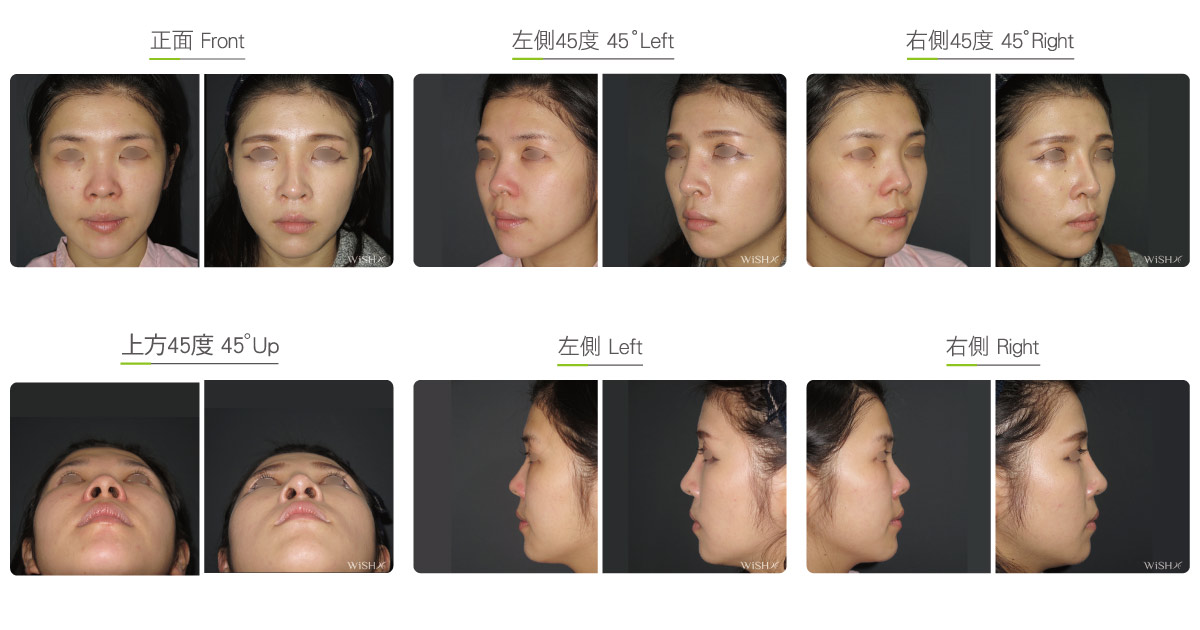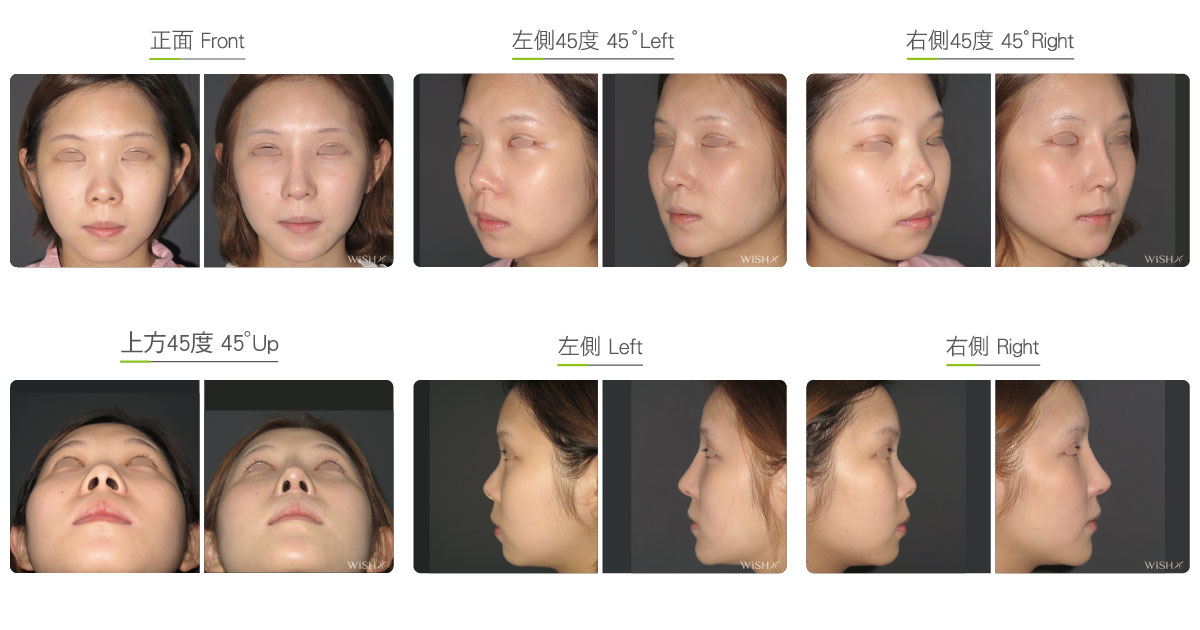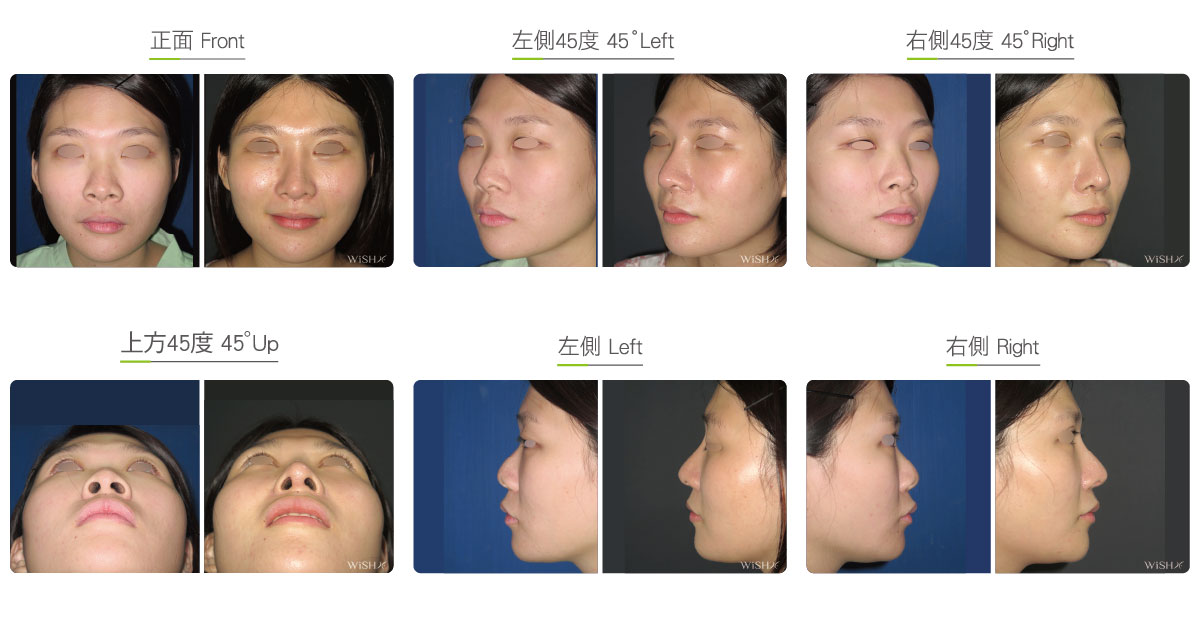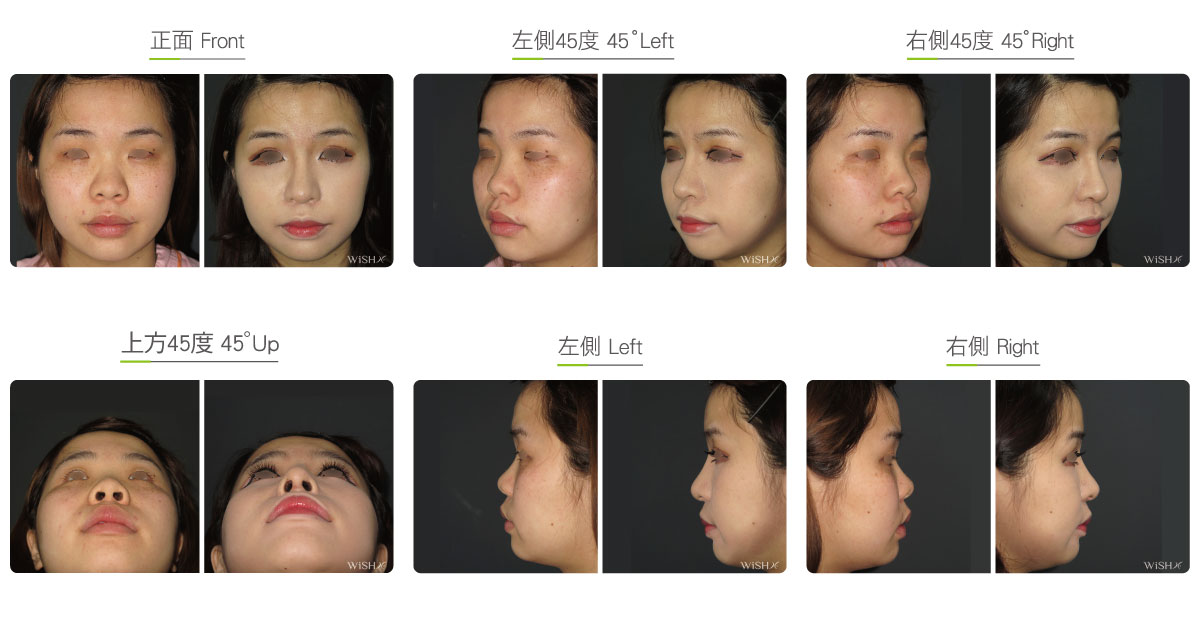Short Nose (Upturned Nose) Correction
An upturned nose is very common among patients undergoing rhinoplasty, particularly in the local population where a face shape of southern ethnicity is common, accounting for approximately 20% of all patients. Although there is no definition of an upturned nose in medicine, an obvious upturned nose symptom indicates the connection between the nostril and nasal tip slanted upward by over 30°, the angle between the nasal columella and upper palate of over 110°, or the frontal exposure of the nostrils over two-thirds of the overall nostrils. This problem mainly results from congenital or hereditary nasal tip cartilage hypoplasia or upward retraction of the exceedingly tense nasal tip skin and subcutaneous ligament. Severe patients may even have aplasia or defects of the nasal septal cartilage. Therefore, abundant autologous cartilage should be transplanted for correction. Dr. Chuang employs both the nasal septum and auricular cartilage and utilizes the nasal septal cartilage firstly to elongate the nasal columella and then the auricular cartilage to augment and extend the nasal tip. This practice simultaneously elongates the nasal supratip and nasal columella and extends bilateral alar margins downward to conceal the nostrils. Generally, if the frontal nostril exposure can be concealed by one-half or even two-thirds, it amounts to a successful correction. If the nasal septal and auricular cartilage cannot fulfill the correction objective upon evaluation by Dr. Chuang, autologous or homogeneous costal cartilage (allograft) can also be applied. Nevertheless, attention should be paid to the tightness and tolerance of the patient’s skin on the elongation of nasal tip cartilage, or it is likely to cause an exceedingly thin skin or poor healing of an intranasal wound. Therefore, if the patient manifested poor skin conditions at the nasal tip, autologous fascial transplantation (dermal fat graft) for nasal padding will be necessary to prevent an exceedingly pointed nasal tip or visible cartilage shadows. Moreover, because patients with an upturned nose mostly have a very flat nasal bridge, concurrent open rhinoplasty and alar reduction should be considered to improve the appearance of the whole nose at one time.
Surgical conditions
Duration
- Type of anesthesia: IV sedation + local anesthesia or general anesthesia
- Surgical incision: At the bottom of the nasal columella and inside the bilateral nostrils
- Recovery: 5–7 days
- Removal of stitches: 7 days
General instructions
Fast from food and water on the day of operation
- Wear a tape or nasal splint for 1 week postoperatively to stabilize the nasal bridge.
- Avoid smoking and alcohol and impacts to the nasal tip for 3 months postoperatively, and clean the intranasal wound in the morning and evening every day.
- Abstain from eating raw food, seafood, and irritating food or spices for 3 months postoperatively.
- Avoid exposure of the nostrils to dirty water (sea water, swimming pool or sauna water, and hot springs) and close contact with pets and dust mites for 3 months postoperatively.
- In case of symptoms of flu after the operation, please visit a doctor immediately.
Ideal candidates
- Patients with a severe congenitally short nose or an upturned nose
- Those with broad and obviously exposed nostrils
- Those with nasal tip contracture due to the failure of the prior rhinoplasty
Potential complications
- Scarring
- Nasal tip thinning
- Exceedingly pointed nasal tip
- Poor healing of intranasal wound
- Incomplete correction
Surgical advantages
-
It is able to restore the normal horizontal level and appearance of the nasal tip.
-
It is able to completely and permanently address the upturned nose.
-
The surgical results are stable, and there is a low likelihood of retraction.
Surgical drawbacks
-
Surgery may need to use abundant cartilages from more than two body parts.
-
The resorption of autologous cartilage may differ.
-
The surgical results may be affected by the exceedingly tense skin at the nasal tip.
-
Elongation of the nasal tip may make the skin too tight or thin.


